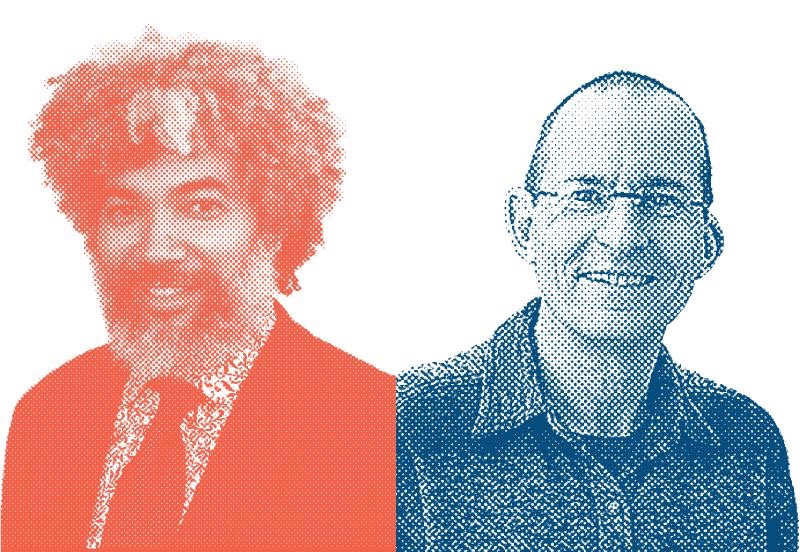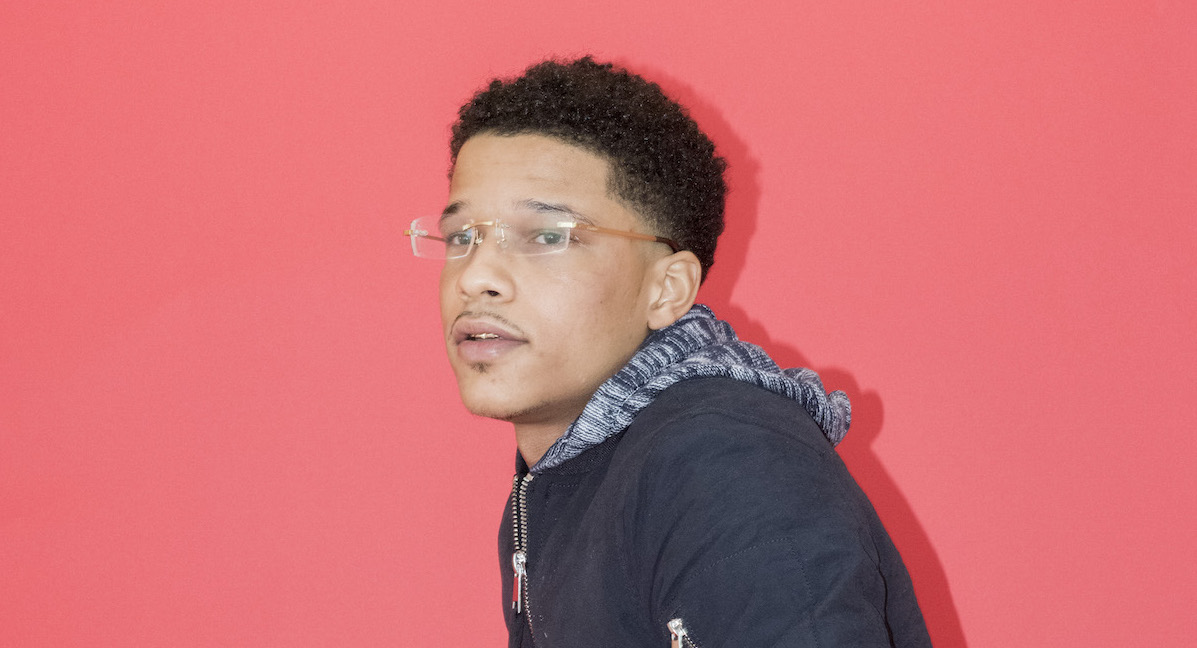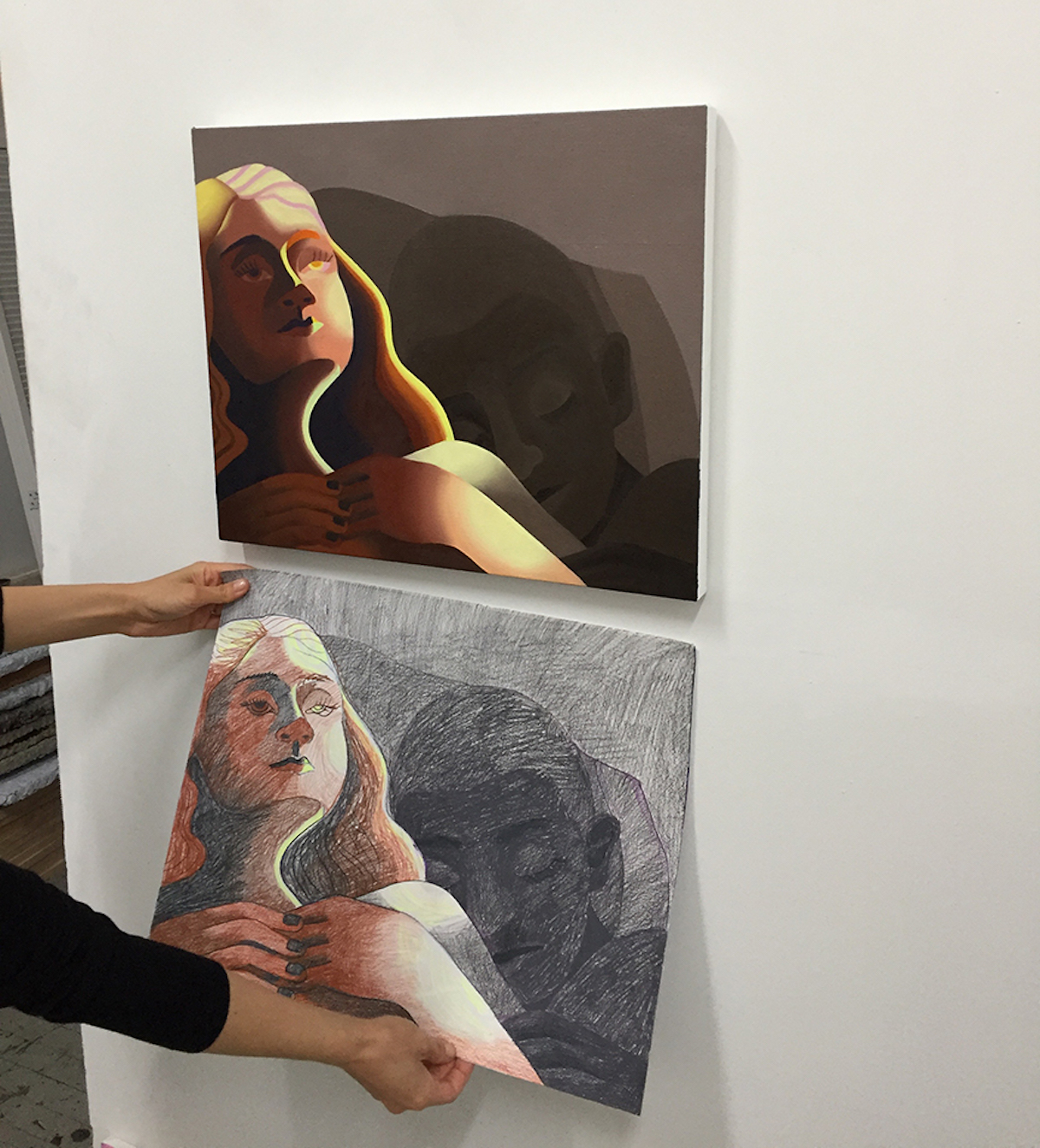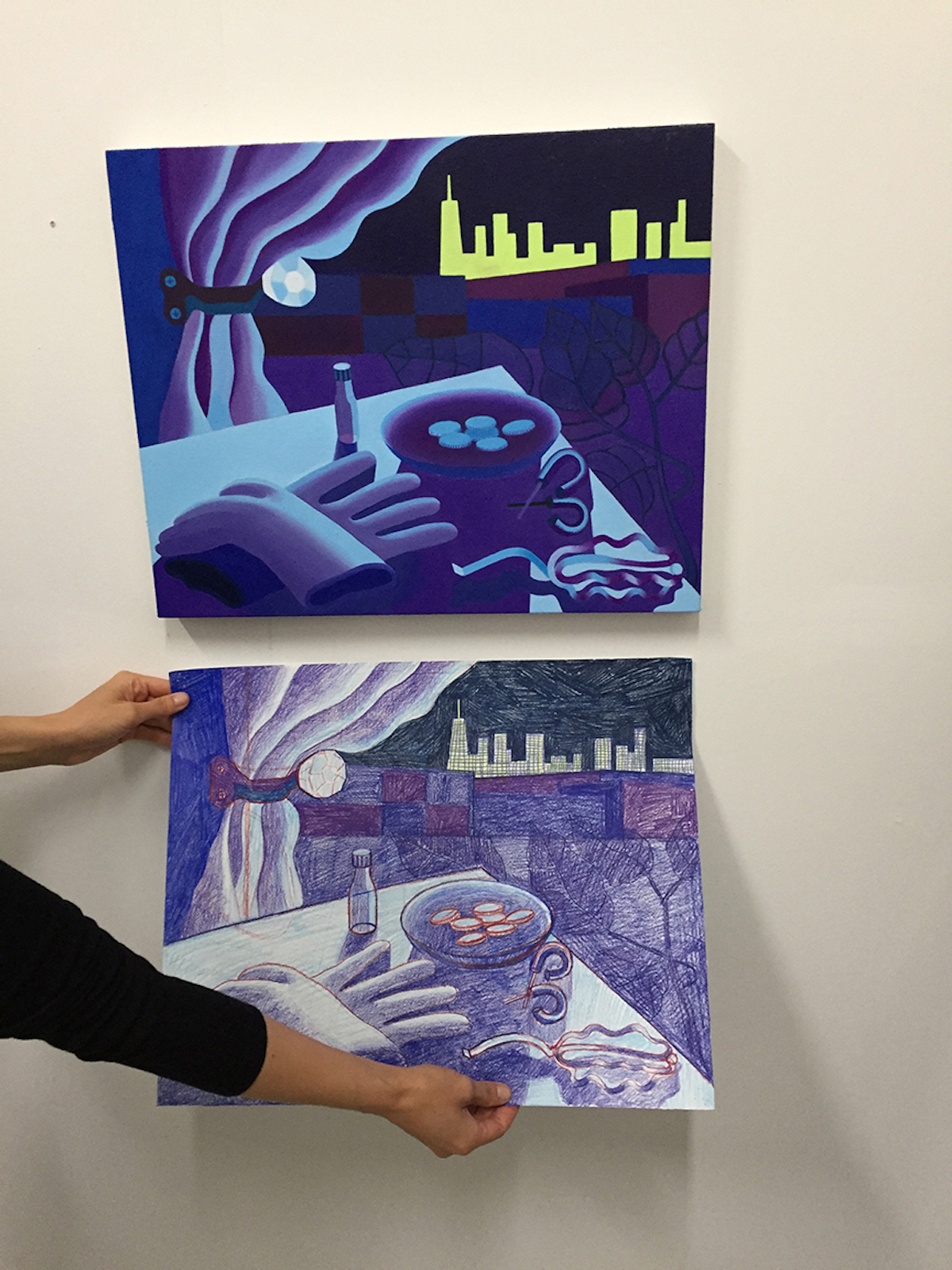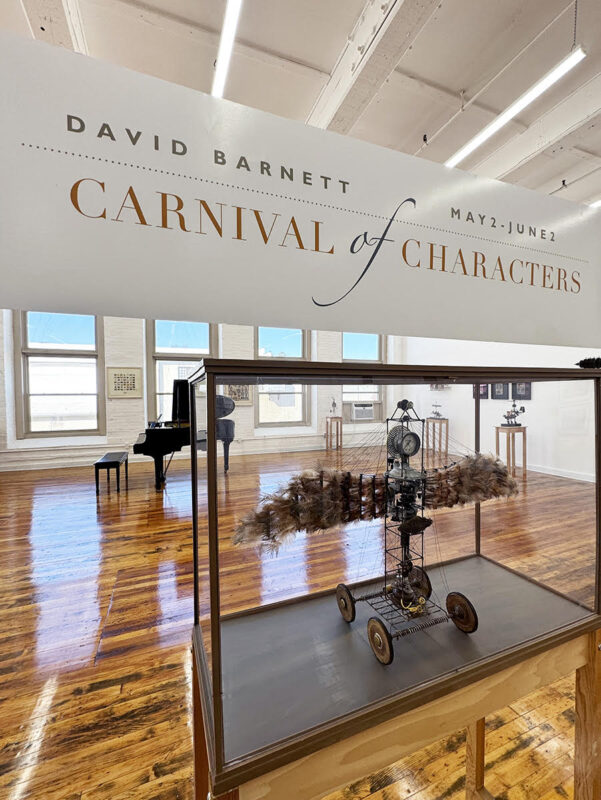Amy Boone-McCreesh Visits Leigh Ruple’s Brooklyn Studio
I met Leigh Ruple recently at the opening reception for her show Street Light at St. Charles projects in Baltimore. Leigh generously invited me to her Brooklyn studio, where I was able to talk with her about her life, her process, and living in New York.
Leigh’s exhibition at St. Charles will remain on view through appointments until May 12, 2017.
 Gate, 2017. Oil on Canvas. 35 x 33 Inches
Gate, 2017. Oil on Canvas. 35 x 33 Inches
Where did you grow up?
I was born near Cleveland, Ohio. I grew up on Lake Erie in a small town outside of Cleveland. The landscape there, especially the vast industrial landscape of that space, influenced my work. I went to undergrad at Cooper Union, so when I was 18 I moved right to New York. I went to Cooper, graduated in 2006, took about five years off and went to Bard in 2011.

What is the driving force behind your work?
I would say, that the work is very autobiographical, and that it’s sort of an emotional outlet for the day to day experience that I’m living. If I see something during the day and it sticks with me, I’ll draw it later. If I imagine something that day, I’ll draw that later. I mean, these new drawings, they’re more about living in Ridgewood, Queens, where I moved this past fall, and about the different people I’ve met while living there. They’re also about the spaces in Ridgewood.
I feel like the woman running is some sort of self-portrait with the city behind her because I run around this park and you can see Manhattan, the skyline is very dramatic because Ridgewood is really elevated, so at night you see the city lit up through the trees.
The gate drawing is about these kind of hand built seventies vibed garden spaces outside of these suburban feeling apartment buildings in Ridgewood. There’s just something so heartfelt about someone building these little flowerbeds.
In a way, the paintings are all kind of self-portraits, whether they’re pictures of men or women. You can only project your own idea onto someone, you can’t really every fully grasp their emotional life. Maybe it’s a portrait of someone else sometimes, but it’s really just a projection of my own interpretation of them. They are self-portraits even if they are portraits of other people. I’m also really interested in taking the figure out sometimes. And putting in these architectural spaces, these landscapes, instead.

Color is such a big part of your work; do you think about which paintings will exist together or how they live as a group when choosing colors?
Not really, I don’t think so. I think that it does stem from drawing and it stems from having a big box of colored pencils, where there’s 200 different colors and you just pull them out and it’s ready to go and you’ve got all this color right at your fingertips. And I think there’s an ease to that kind of process that just lets me try out random combinations of things and it’s very casual and fast. It starts out really casually in my sketchbook. But usually it’s the throw away moments that end up having a lot and then I’ll go to the drafting table, prop that thing up and make a bigger version of the quick sketch and then I kind of work out the composition and figure out how things come to together and work out the colors more. I feel like some of these drawings have 30 different colored pencils in them.
The drawings become a template for the paintings. I have so much muscle memory for what pigments do, what happens when they mix together, that I just sort of know what happens, and I’m more interested right now in figuring out what the idea is. I’m less about struggling through the physicality of paint right now. Although I do think what you’re saying (do the paintings ever surprise you despite being made from drawings?) is so huge. I feel like things that surprise me and throw me off are happening in my life and outside of painting and I’m somehow trying to capture these moments so that I can bring them out in the work. Painting for me is a very physical act, drawing for me is more of a cerebral situation.
Put the following terms in order of importance to your practice and work: Form, Process, Content.
Definitely process first. Form or content, that’s tricky. Maybe they’re even. I think form would go second. I do think that content is so important but I think that form could leave the content in a more ambiguous space or something. It’s more important to have the form locked in and the content could be more flexible. My friend was here the other day and she saw the painting of the guy holding the apple cart and she was like, “ah, classic Leigh Ruple, physiological, inward looking composition.” I feel like someone else said something to me the other day about how the work had a consistent vibe, he was like, “your work has a vibe.” I think I’m trying to play with that, or mess that up now, by adding more black and white into the paintings. As opposed to grabbing you with the color.

What are you currently working on or working towards?
I’ve been making small paintings for a couple of shows. I’m going to be in a group show at Morgan Lehman Gallery that opens on April 7th called the Twenty by Sixteen Biennial where each artist creates two 20×16” paintings.
I’m also doing a solo show at my friends’ project space in Bed Stuy called The Boom Boom Room that opens Saturday April 22, 2017 with a reception from 3 – 7 PM at 540 Decatur Street, Ground Floor. I’m working on that right now with these three images of the guy, the girl, and the gate. And then I hope to take the whole summer off and just paint.
 New York, 2017, Oil on Canvas, 30 x 33 Inches
New York, 2017, Oil on Canvas, 30 x 33 Inches

*********

Keep Going: Inertia is a monthly studio visit blog series that aims to make use of a consistent model and series of questions for visual artists. The content of the studio visits will highlight the struggles of a regular studio practice and the drive to keep working. National and International artists are to be featured to examine different approaches to working as a contemporary artist. Inertia will deliver the content through a compact and easily consumable format, allowing visitors to engage regularly and reliably.
Author Amy Boone-McCreesh is a Baltimore-based artist, writer, and professor.
This interview was conducted in April 2017 in Brooklyn, NY.
To see more work, head to Leigh Ruple’s website.
